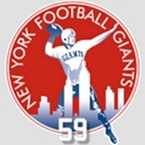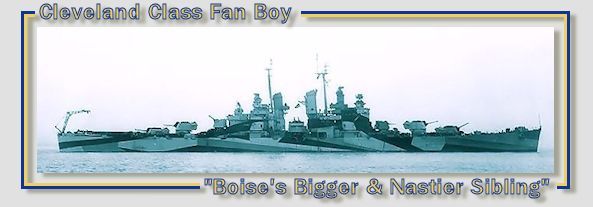el cid again
Posts: 16922
Joined: 10/10/2005
Status: offline

|
RHS Level II Update Link 2.20
https://onedrive.live.com/redir?resid=30E506228938D79E!33899&authkey=!AEms6pC46mkIZq4&ithint=file%2cmsi
As advertised, this update includes all out year MONSOON seasons of the pwhexe.dat files. Unexpectedly, it also includes revisions of all other pwhexe.dat files due to eratta or omissions. I failed to remember that Andrew Brown's interpretation of the British North Borneo Railroad includes only half its length. This may be a compromise because, except for RHS, AE only has one pwhexe.dat file. And indeed, that railway was hurt by bombing of its bridges (but not before the war begins!). But that railway is famous for being used THROUGHOUT its length IN SPITE of the lack of continuous rail: It is the vital communications infrastructure of its area, and was kept in service by locals, using trucks as prime movers or independent railway vehicles on sections not serviceable by engines. Another issue was the Bridge across the Bhramaputra River. I forgot Andrew has this bridge (not built until 1944) for both road and railroad - in 1941! Before the completion of this bridge, and the upgrading of the Bengal and Assam RR (which both occur in Spring 1944), it was a six week journey from Calcutta to Upper Assam. Removing the primary road bridge as well as the rail bridge (until they are built) makes river traffic assume more of its historic role as well as impose major logistical constraints on the Allies in Assam early in the war. As well, two vital primary roads - to Imphal and to Akyab - do not yet exist in 1941. Support for Allied air bases and ground operations in the area depends a great deal on riverborne logistics, and that is vulnerable to enemy air power. The Bhramaputra River is a major barrier to land movement of supplies and troops - road and rail links require moving far up the Ganges - and then back down the other side - on fairly limited networks. There were also a few bad hexsides - mainly ocean or both instead of land - needing correction. I am quite pleased with the "final" set of files (absent the Fall season except for 1942, and absent Japan Enhanced Scenario versions). They use the Matrix system (primary or secondary roads or trails in all directions when and where appropriate) as well as the RHS system (primary and secondary roads or trails where they really run in rural areas - which is much of the map - to channel movement along the lines it almost had to move along).
Another major effort went into working on air art. Both sides get full sets of new air art filmstrips. Some of these rework the very worst cases in the collection of art. And for the first time I made proper alpha's myself (instead of copy and paste or modification and paste of pre-existing alpha's). Both these were cases where I had black and white art - lending itself to making an alpha by a one step process instead of the more usual, complicated one involving several steps.
I began to work on air art so I could add the Ku-1 light transport/training glider for Japan. It is assigned to the Raiding Training Regiment - in keeping with the doctrine that says an airborne unit should own its own transports. [JAAF was the only service in history to do this, following German advice even the German's themselves never implemented.] The Raiding Training Regiment is also unique in another respect - it conducted operational combat jumps as training! [This in China, until midwar, when it was dissolved in favor of more line units.] So the Raiding Training Sentai, in spite of being a training organization, also may conduct operational jumps - if a player wants to. It disbands on the same day the Raiding Training Regiment does, mid war. The unit also could upgrade to Ku-8's or other gliders - or to transport planes - when these become available. The Ku-1 is a very small, slow glider of limited capacity towed by a Ki-51! This required an entirely new set of art be created. In the process, I became concerned about RHS glider data. Gliders are unusual - they have no power per se - so how did I calculate maneuverability (using the RHS formulas)? We fly "combinations" of glider and tug - how does that affect durability and range? I decided to add written notes to the normal plane definitions and rework all glider units to insure consistency.
FYI gliders work precisely the same as air transports do. This is because gliders can “take off” by being “snatched” from the ground – particularly in Asian operations. However, they have peculiar characteristics. The primary trade-off is payload for range: a glider unit “combination” will always have less range than the tug has, and will also always carry more payload than the tug can (if it carries any at all – the Ki-51 as tug for a Ku-1 has no useful load. Also, it is so small a plane, it tows only one glider.
Most other glider combinations in the game involve transport (or bomber-transport) aircraft which may tow two medium sized gliders. But the one large glider in the game – the Ku-7 (which was a scaled up
Ku-1 – complete with its twin booms0 – is towed by a Ki-67 I bomber. In spite of only one glider per tug, and no cargo on the tug, it still has the greatest capacity of any combination in the game – 16,000 pounds
(= 1 8 ton tank). Normally, air transports in RHS are rated by troop capacity on the basis of 100 kg (220 pounds) per troop. However, gliders (and a few dedicated air cargo aircraft) are rated for their capacity in pounds - because they are used to lift vehicles, guns and other heavy cargo – and must be so rated in order to actually lift them.
Reviewing Allied gliders, I found only one type used in PTO – although by multiple nations. The Waco CG-4 (sometimes with other names) – was used by RAF, RAAF, USAAF and maybe the USMC. The art is fully reworked – we lost the D-Day invasion stripes for example. We went over to glider art rather than tug art for tops (previously used in AE RHS – a reversion to WITP era RHS – using Cobra’s art for WITP as a foundation). The insignia cannot be recognized (it is present) due to small size. So I use the same art for three different plane types: RAF, RAAF and USAAF – permitting proper control of upgrades and rates of production. [RAF and RAAF were added.] These three all are three aircraft “combinations” involving a C-47 and two CG-4s – but the RAAF type is called Hadrian instead of CG-4 – while the RAAF uses the CG-4 as such because they came direct from the US (with US paint scheme). The US form comes early – mid 1942 – and stays in production. The RAAF from is limited in number and all appear in February 1943 (when they were transferred). The RAF form is late war (for operations out of India) – but stays in production once they start to arrive.
This led me to wonder how the RAF functioned – late war it gets a real “airborne” division. [This is a composite unit – a real airborne brigade, an airlanding brigade, and a heavy brigade. IF these three ever combine – they become a ground unit unable to conduct airborne assault – but are better able to fight heavy ground units.] How was the airmobile unit to fly – with so few RAF air transport assets? Review led to discovery that 48 Squadron – about double the size of PTO RAF units – transferred to India in 1945. Also that six squadrons formed in India in late 1944 and early 1945 – these latter all glider units. So all these have been added.
Another addition is pure chrome. There was one specialized USMC glider unit – VML-711 (and nominally Marine Glider Group 41, but with no other squadrons formed, for a brief period). Along with most other Marine special forces, it was disbanded in 1943 (in favor of more, large assault divisions). It also was
never sent anywhere. As chrome, an in keeping with “power to the players” RHS design philosophy, if a player ever finds an (early war) job for the unit, it may be transferred from the East Coast to PTO. It gets 12 (of the 13) gliders actually transferred by the Army to the Navy (for Marine use). I did not create a separate type for this unit – it must use Army gliders or convert to USN/USMC air transports. I also added its commander – and he will transfer to the pools when the unit disbands – a highly rated air transport pilot as well as a unit leader.
I tried to add Russian and Canadian gliders, but failed. The Canadians didn’t use the Hadrian, but an earlier training glider – and apparently never in operations (just as part of the Empire Air Training Scheme). The Russians made few gliders, and the only type that might have been able to share art (using a Russian LI-2 version of the C-47 as tug) was not mass produced. The Russians only built about 100 small gliders for operations, and abandoned their use after the Dnieper River crossing (which was a success) – probably not having enough to lift a significant force after that.
Stuck with down communications, I also reviewed locations, finding 10-12 cases with eratta and 1 base force assigned to the wrong base in one scenario (detected because that location had two instead of one base forces as in other scenarios). There were a few other aircraft and air group eratta detected and worked in.
The next update will include all the post 1942 FALL pwhexe.dat files. Then I will tackle the pwzone.dat and pwlink.dat files. There will apparently be one RHS pwzone.dat file and four (seasonal) pwlink.dat files.
< Message edited by el cid again -- 5/22/2016 3:09:11 AM >
|
 Printable Version
Printable Version











 See:
See: 

 New Messages
New Messages No New Messages
No New Messages Hot Topic w/ New Messages
Hot Topic w/ New Messages Hot Topic w/o New Messages
Hot Topic w/o New Messages Locked w/ New Messages
Locked w/ New Messages Locked w/o New Messages
Locked w/o New Messages Post New Thread
Post New Thread